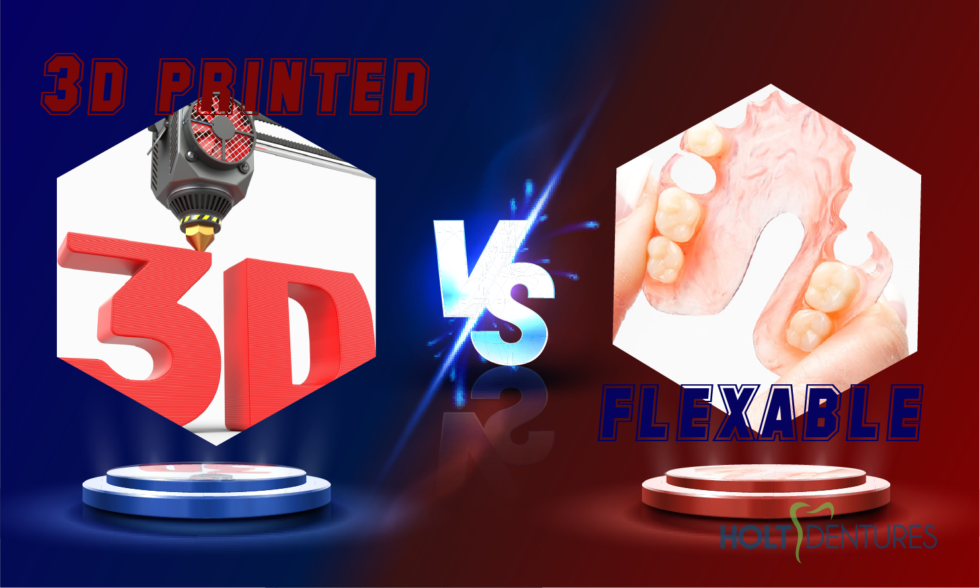Flexible Dentures vs 3D Printed?
Artificial teeth have advanced over time to ease the transition from natural to artificial teeth. New technologies, such as flexible dentures, and 3D printed dentures have increased the comfort level for many people and grown the hassle-free faculty. It is difficult to make the transition from natural to artificial teeth, but many options are available to make the transition easier. Flexible and 3D printed dentures do come with positives and negatives, so consider this before making the transition.
What Are Flexible Dentures?
While traditional partial dentures are made from acrylic or cast metals, Flexible dentures are typically constructed from thin thermoplastic nylon. The nylon is then heat-injected into the model of the mouth and left to set. By which time the cooled nylon holds its shape through elastic memory.
Pros:
- More comfortable then traditional
- Good for people with allergies to metals
- Flexible for a better fit
- Very strong.
- More natural look.
Cons:
- Not able to reline.
- More susceptible to discolouration.
- Not repairable.
- Cant add tooth.
What are 3D printed Dentures.
Also known as digital dentures these partial dentures are constructed by first using a computer-generated 3d model that is then inputted into the printer. Molten plastics are then processed through a nozzle which builds up layers on top of each other until the print is completed. Then excess plastics are shaven off to get ready to process the teeth.
Pros:
- Lightweight and Flexible
- Colour Matched
- Durable
- Precise Fit
Cons:
- Can’t Reline
- Unable to Repair
- Unable to add tooth

